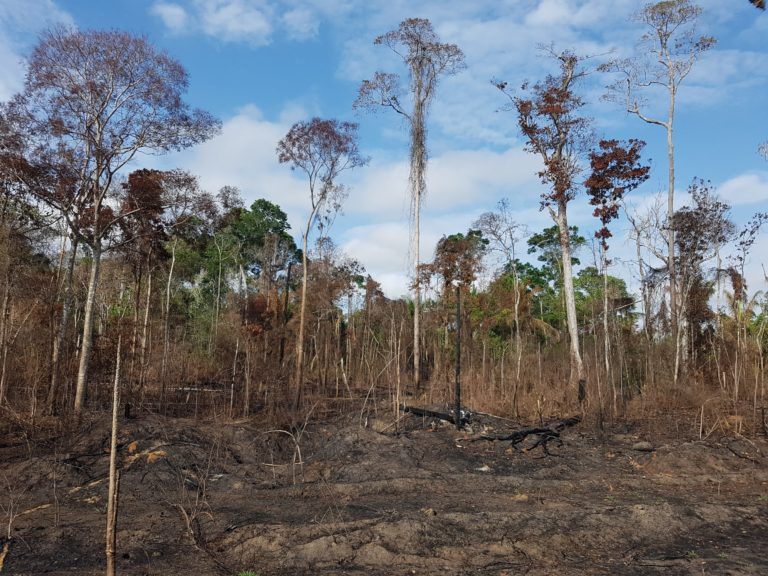Human Activity Has Degraded More Than a Third of the Remaining Amazon Rain Forest
A logged and burned section of the Brazilian rain forest. (Erika Berenguer)
The Amazon rain forest has been degraded by a much greater extent than scientists previously believed, with more than a third of its remaining area affected by humans, according to a new study in the journal Science.
Large areas of the Amazon have already been completely deforested, and much previous research has focused on that. The new paper shows that up to 38 percent of the remaining area—equivalent to 10 times the size of the United Kingdom—has been affected by some form of human disturbance. Among other things, this has caused biodiversity loss and carbon emissions equivalent to or greater than those from deforestation, the researchers say.
The authors identified the main disturbances as edge effects (which fragment habitats and cause ecological changes within forests adjacent to deforested areas); logging, much of it illegal; uncontrolled fires; and extreme droughts, intensified by human-induced climate change. Many areas are affected by multiple disturbances.
The findings came from a review of previously published data from satellite imagery, and a synthesis of other published data, covering the period 2001 to 2018. Degradation is different from deforestation, where the forest is removed altogether and a new land use, such as agriculture, is established. Although highly degraded forests can lose almost all their trees, the land use itself does not change.
The research was done by a team of 35 scientists from seven nations including Brazil, Colombia, Germany and the United States.
“One of the important takeaways from this study is that forest degradation and deforestation do not necessarily fall on a linear trajectory,” said coauthor Hannah Liddy of the Columbia Climate School’s Center for Climate Systems Research. “Processes that lead to forest degradation can be distinct from those that lead to deforestation. Therefore, policies to address them must also be distinct.”
The team projects that by 2050, the four main degradation factors will continue to be major sources of carbon emissions, regardless of the growth or suppression of deforestation.
“Even in an optimistic scenario, when there is no more deforestation, the effects of climate change will see degradation of the forest continue, leading to further carbon emissions,” said lead author David Lapola of Brazil’s University of Campinas.
“Few people profit from the degradation processes, yet many lose out across all dimensions of human well-being, including health, nutrition and the place attachments held for the forest landscapes where they live,” said Rachel Carmenta, a coauthor at the University of East Anglia, in the United Kingdom.
The authors propose creating a monitoring system for forest degradation, as well as prevention and curbing of illegal logging and controlling the use of fire. One suggestion is the concept of “smart forests” which, like the idea of “smart cities,” would use different types of technologies and sensors to collect data that could be used to help conserve resources.
Adapted from a press release by Brazil’s Bori Agency.

